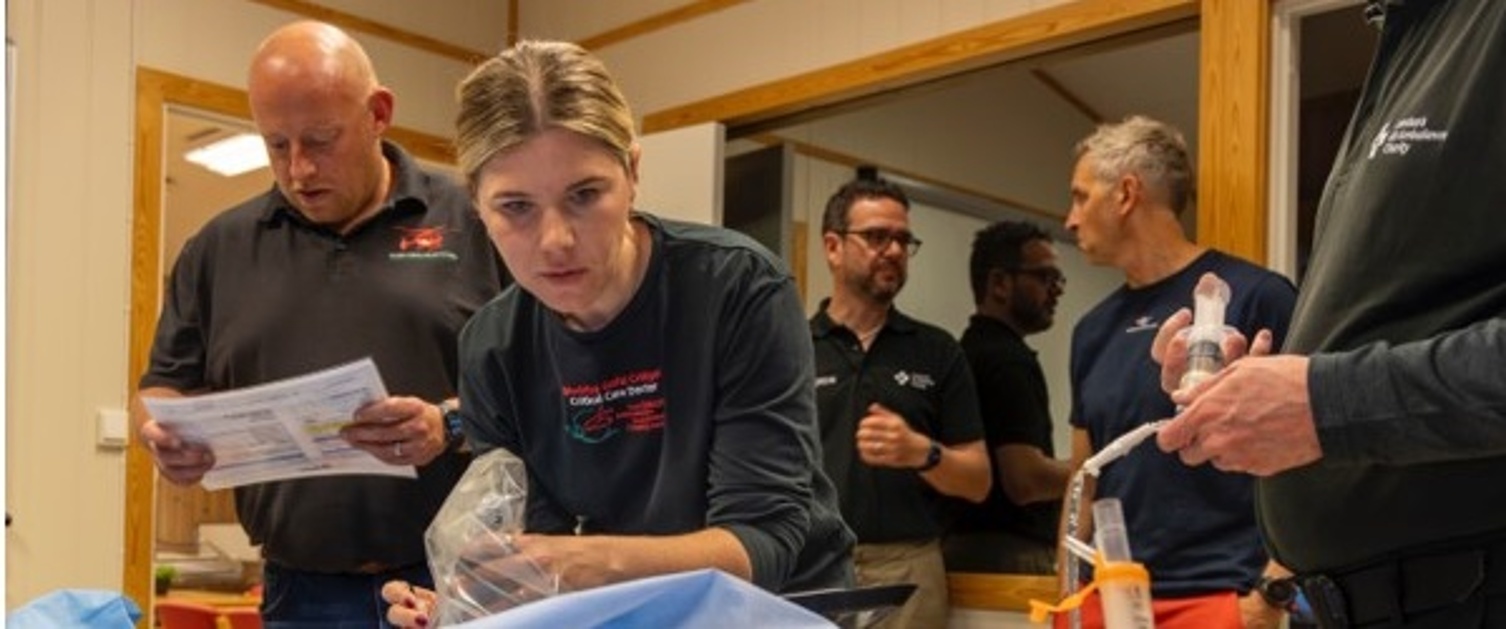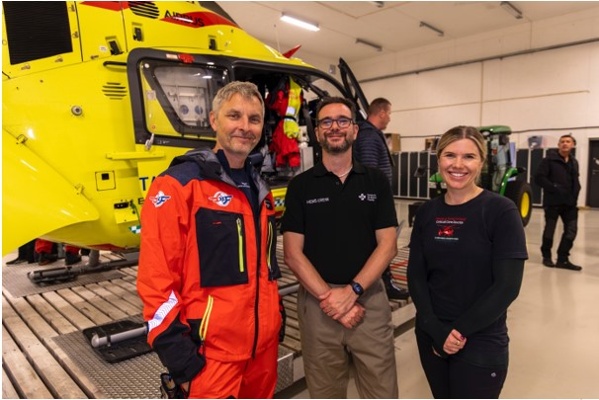Air ambulance services share knowledge and critical care training in international collaboration

Premature babies, stab victims and hearts that have stopped beating were all on the table when three of the world’s leading helicopter medical emergency services joined forces on advanced patient care.
At first glance it may be tricky to spot the similarities between London, Wales and Norway: The British capital has 10 million citizens who go about their lives on 1,500 urban square kilometres. The 3.2 million people of Wales live across a 13-times bigger area of mountains, shorelines and cities. Across the North Sea, there’s the extreme version of that: Norway, with its 5.5 million inhabitants scattered across 324,000 square kilometres.
One thing these places have in common, however, is that they are homes to three of the world’s leading helicopter emergency medical services (HEMS). This month the Norwegian Air Ambulance Foundation gathered representatives from all three services in Norway for experience exchange and critical care training.
The world of HEMS is small, according to Marius Rehn, HEMS physician and senior researcher at the Norwegian Air Ambulance, and professor at the University of Oslo. Collaboration is therefore vital to avoid wasting time and resources while working towards the common goal; to help prehospital patients in the best ways possible.
"HEMS crews don’t have the luxury of a sterile operating theatre," he said.
"Our procedures are carried out in someone’s bathroom, outdoors, or in the back of an ambulance or helicopter, and some of our equipment is made for in-hospital use, says Rehn who has experience from both London and Norway. London, Wales and Norway have services that seek better solutions and try to avoid arrested development. A lot of the medical and practical challenges we face are the same."
Fourteen physicians and critical care practitioners shared their expertise and experience, discussed approaches, and trained for relevant medical procedures at the joint gathering. Rehn led the workshop on medical cardiac arrest and the training on inserting a tiny balloon into the aorta. The balloon concentrates the patient’s blood flow to the heart and brain to increase the chance of resuscitation. The very same balloon method is used in London to stop severe bleeding.

Knife incidents and other penetrating trauma make up 30–35 percent of the missions London’s Air Ambulance fly on, which makes their HEMS crews quite the experts on patients at risk of bleeding out. Medical director Dr Tom Hurst has 16 years of experience in treating them.
"The most severe ones, those whose hearts have stopped, need a surgical procedure where we open their chest to address their injuries," he said.
"On the other end, we have patients who only need pain relief and oxygen while we take them to the hospital. In the middle we have patients who are bleeding severely, who we treat with blood transfusions and other interventions to try to stabilize them. That’s the group of patients we focused on in our training session here."
Training – or more precisely how the other services execute that – is one of Hurst’s takeaways from the gathering, along with how Norway aims to handle medical cardiac arrest and what Wales presented on births and newborns.
In areas with a rural population, complicated and premature births may happen far from the nearest hospitals. In recent years the Welsh HEMS crews have flown out on an increasing number of such critical cases, and chose to share their experience with their international colleagues:
"There are several reasons behind the increase, like the centralization of hospitals or women giving birth at a later age than previously possible. It seems our colleagues elsewhere face similar circumstances" said Laura Owen, HEMS physician with Wales’ Emergency Medical Retrieval and Transfer Service (EMRTS).
She stressed local midwives and ambulance personnel do an excellent job at handling prehospital births, but what the air ambulance team provides is that bit of extra competence that complicated cases would get in the hospital:
"When you go to these jobs, you already know you’ve got two patients: The mother and the baby. If it’s twins, you suddenly got three. That’s something we have experience with and based our training on here," she said, grateful to have face time with international colleagues who not only share her profession, but also her enthusiasm and drive for improvement:
"Sometimes, at work in your own health care system, you get told that some things can’t be done. Then you meet colleagues from another service who do that exact thing, and you understand that you could absolutely do that! It makes me really enthused and inspired. I think there’s no end to the possibilities if we work together and have the right people driving it forward."
Main picture: EMRTS consultant Laura Owen
Inset: Marius Rehn, Tom Hurst and Laura Owen visiting the HEMS base in Ål, Norway.